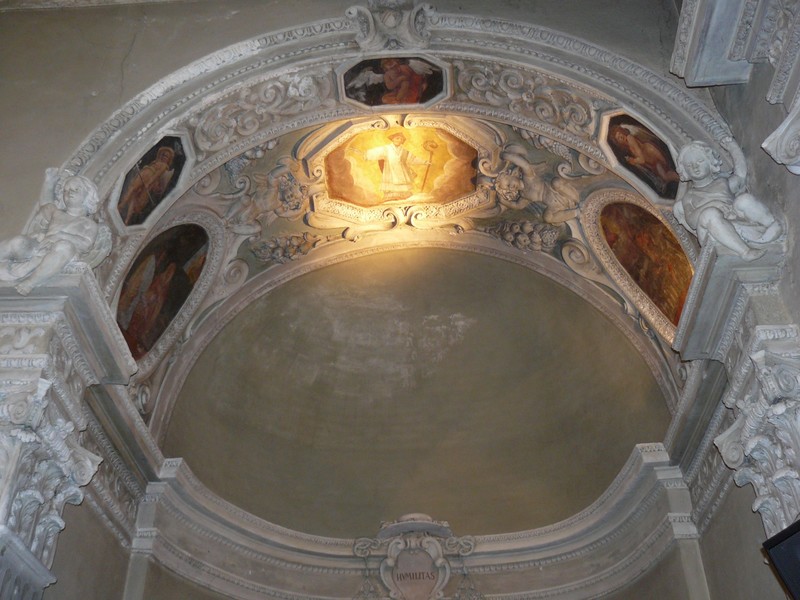CHURCH OF SAINT BASIL AND MAURICE
Chiesa dei Santi Biagio e Maurizio
Via alla Chiesa 33
6808 Torricella-Taverne
Although the parish church of Saints Blaise and Maurice is certainly more ancient, the first documentation is from 1361. In the first half of the 17th century the apse was built and modifications were carried out on the two side chapels, dedicated respectively to St Charles and the Madonna of Mount Carmel.
The stucco decorations were developed over the course of time. Those on the walls of the chancel date from 1638-1641 and were made by Galeazzo Riva of Lugano (documented 1636-1661), a stucco artist with a fair number of works in the Ticino and Valtellina areas, but little biographical information. Between the 1630s and 1650s an anonymous plasterer worked in the Chapel of St Charles. In 1664, Giovanni Passardi of Arosio decorated the sacristy, which was partially demolished in 1929. The ornaments of the choir and high altar were made in 1718 by Francesco Bellotti, a little-known stuccatore originally of Torricella (documented from 1718 to 1738), and those of the altar of the Madonna of Mount Carmel (now lost) in 1729, by Giovanni Battista Adami of Carona (documented from 1710 to 1766).
In 1929 the building underwent many changes. The side chapels were enlarged, involving demolition of stuccos and paintings dating to the 17th and 18th centuries; the sacristy to the north was converted as a men's choir, while a new sacristy was created out of the old polygonal choir. Around 1960, the stuccos of the main altar and St Charles chapel were restored, adding colour to the ornamentation. The latest restoration of the building and decorations was conducted in 2018. (Fig. ).
Interior
Bellotti Francesco
The chancel as currently seen takes a square plan. At the vault centre are mural paintings depicting the Evangelists, Doctors of the Church and the Glory of St Basil, set in polylobate medallions framed by a rich stucco decorative system (Fig. 1, 2, 3). In the lunettes of the side arches, the Resurrection and Pentecost are painted within simpler linear frames.
Documentation from 1638 records the commissioning of the chancel decoration from the stuccatore Galeazzo Riva, son of Andrea of Lugano, subject to payment of 260 gold scudi1. Galeazzo also executed the stuccos of the sub-arch with winged herms, angels and rosettes, those of the pilasters with symbols of the Mass, and the angels resting on the triumphal arch
(Fig. 4). The altar and very animated late Baroque decoration of the back wall were instead made in 1718, by Francesco Bellotti of Torricella. (Fig. 5). Payments to the stuccatore are recorded in the account book of the Confraternity of the Blessed Virgin of Mount Carmel2. The altarpiece painting, with Saints Basil and Maurice, is from the 20th century. The altar terminates in a broken tympanum. On the side elements rest two stucco angels with palms, the symbol of martyrdom; at centre is a complicated cymatium in relief surmounted by a pair of angels showing the Eucharist, providing visual and iconographic complement to the Eucharistic presentation shaped by Riva at the apex of the triumphal arch. The side chapels underwent heavy modifications in 1929. Nothing remains of the stucco decoration in the one dedicated to the Madonna the of Mount Carmel, to the right of the main altar, however we know that in 1729, Giovan Battista Adami (or Adamino) of Carona had been involved in this work3. On the opposite side, in the chapel dedicated to St Charles, the stuccos of the entrance arch and some of the vault survive, chronologically close to those of Riva but attributable to a different hand. (Fig. 6, 7, 8). Especially notable are the angels seated on the cornice at the imposts of the arches; the anonymous stucco artist took care in modelling their poses, which result natural and free.















